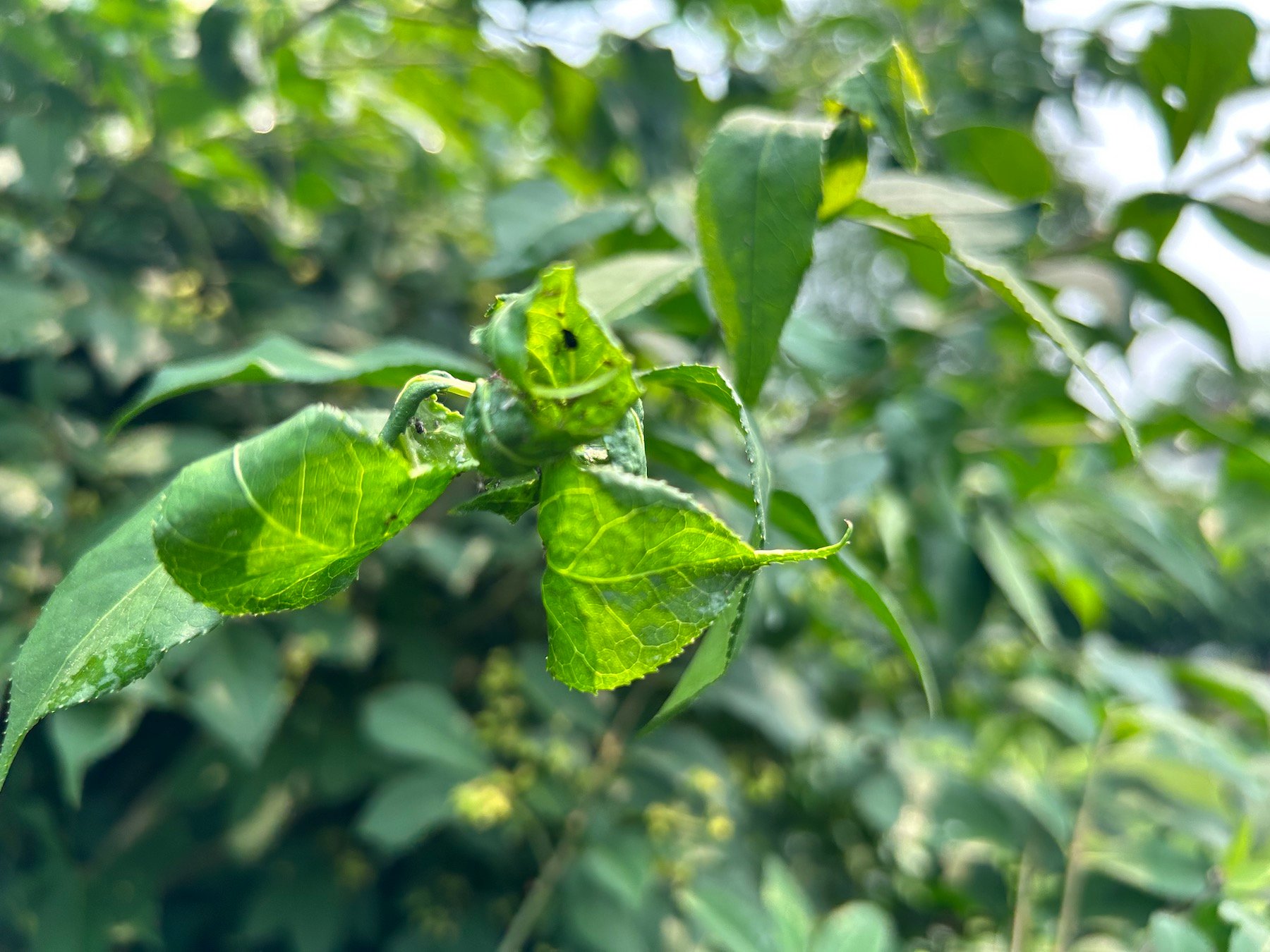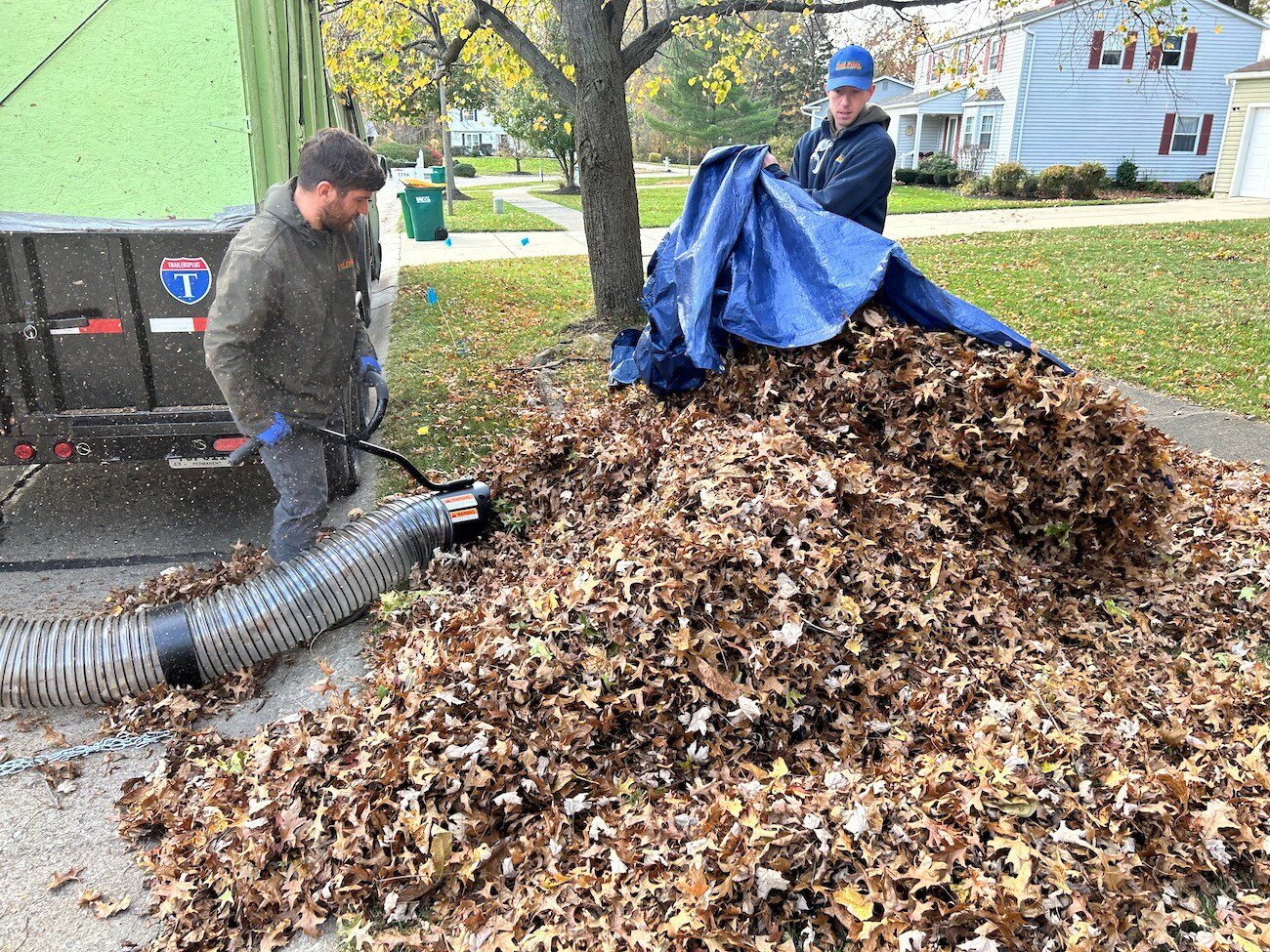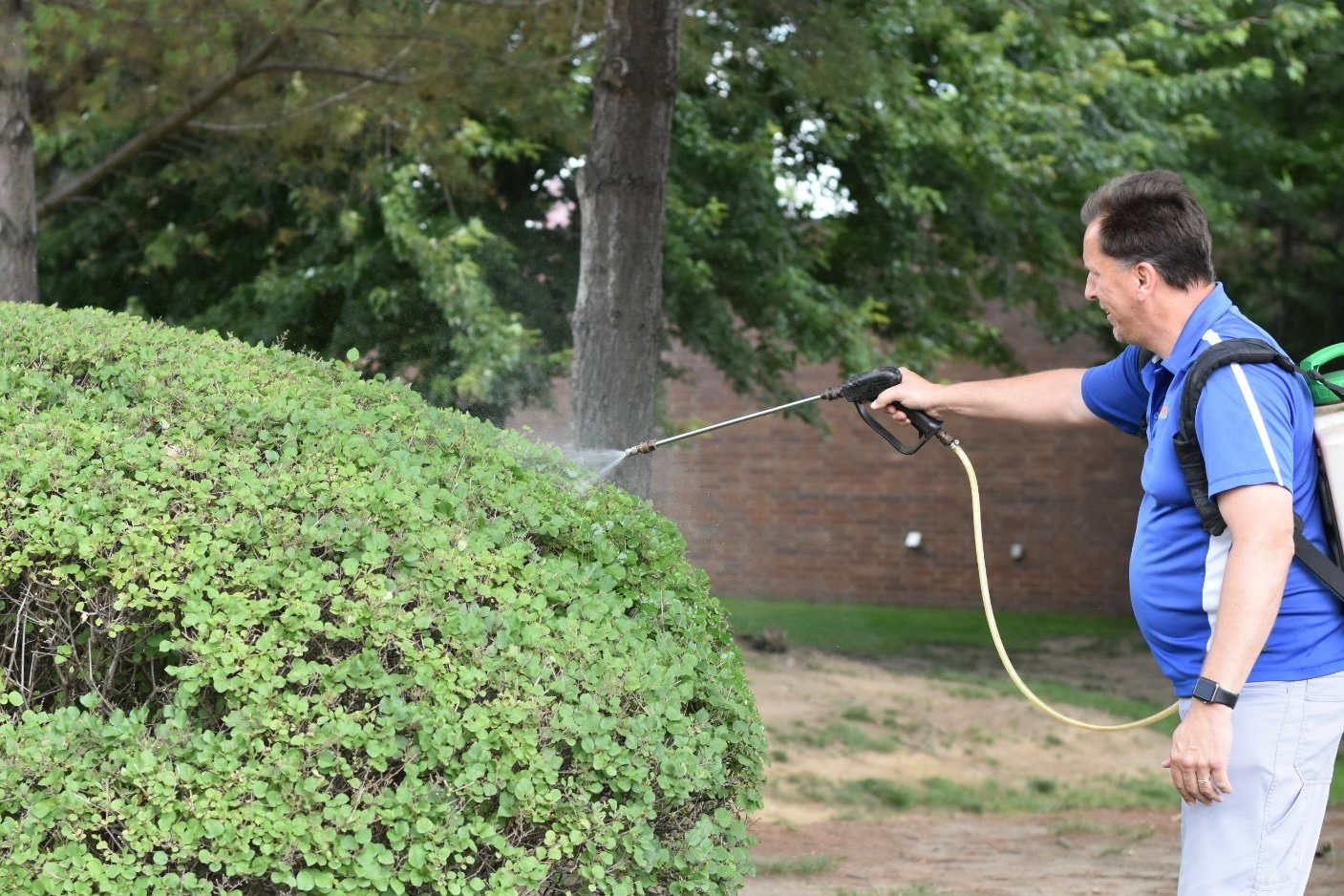/Live%20Website%20Images/turf-pride-customer-green-lawn-shrubs.jpg)
Top 6 Pests That Threaten Your Trees and Shrubs in Northeast Ohio
We get it. You’ve poured your heart (and your wallet) into your landscape, so watching tree and shrub pests destroy your plants and your investment in your home can leave you frustrated, not to mention worried about long-term damage to your landscaping.
You’ve likely tried over-the-counter and DIY pest control methods but to no avail:
Every year, you witness your beautiful ornamental plants being turned into an all-you-can-eat buffet.
That’s why we’ve put together a guide on how to identify and prevent common tree and shrub pests in Northeast Ohio, so you can nip the problem in the bud and keep your plants looking leafy and lush all season long.

The 6 Most Common Tree and Shrub Pests in Northeast Ohio
In order to properly prevent pests affecting trees and shrubs in Northeast Ohio, you must first figure out which pests are wreaking havoc on your plants.
Here’s a look at the most common culprits.
1. Spider Mites
How to Identify Spider Mites
Spider mites can be red, yellow, green, brown, or orange in color but they are so tiny (about the size of a single grain of sand or smaller) that you’d likely need a microscope to spot them.
Pro Tip: Despite their small size, there is a way to check if you do have a spider mite infestation. Hold a white piece of paper underneath the branches of the afflicted plant. Shake the branches above it and allow the debris to fall on the paper. If you see debris that looks like moving dust particles, you likely have a spider mite problem on your hands.
Signs of Spider Mites
While it’s not easy to see spider mites with the naked eye, there are several apparent signs that they have infiltrated your plants.
Spider mites suck the water and nutrients from the leaves of the plant, leading to the following symptoms:
- Fine, silky webs between stems and on the undersides of leaves
- Leaves that are speckled brown, white, or yellow, indicating that the spider mites have fed on them
- Unhealthy-looking leaves, whether they are faded in color or dry and brittle
- Less new growth on the plant
- Bare branches
Active Season for Spider Mites in Northeast Ohio
Spider mites thrive in hot, dry conditions, making July and August prime months for these pests in Northeast Ohio.
Plants Affected by Spider Mites
While spider mites can affect rhododendrons, azaleas, Pieris plants, and evergreens, burning bushes are especially susceptible.
/Live%20Website%20Images/turf-pride-lawn-shrubs.jpg?width=1200&height=676&name=turf-pride-lawn-shrubs.jpg)
2. Lace Bugs
How to Identify Lace Bugs
These tiny insects feature lacy, transparent wings and a lacelike covering over their bodies, giving them their name.
Signs of Lace Bugs
Like spider mites, lace bugs leach water and nutrients from the leaves of the plant, rather than chew on the leaves.
The leaves of the affected plant will become tan, and if you look on the underside of the leaf, you will see the lace bugs. You may also see tiny, black spots, which is leftover material from the insects.
Pro Tip: Lace bugs seek shelter underneath the leaf of the plant so that they’re not washed off by rain or eaten by birds.
Active Season for Lace Bugs in Northeast Ohio
Lace bugs are most prevalent when plant leaves are in full bloom, so be on the lookout for these insects from late spring through summer.
Plants Affected By Lace Bugs
Rhododendrons and azaleas are these pests’ favorite plants, but they can also affect Pieris plants.
3. Japanese Beetles
How to Identify Japanese Beetles
About a half-inch long, Japanese beetles are an iridescent green color and have coppery-looking wing covers.

Signs of Japanese Beetles
Japanese beetles feed on the leaves, and once they’ve had their fill, the leaf will have a lacy or skeleton-like appearance, with many holes scattered throughout.
Heavy infestations may weaken the plant overall, leading to wilting and yellowing.
Active Season for Japanese Beetles in Northeast Ohio
Japanese beetles are most commonly found throughout the month of July.
The good news is that these pests only spend about three weeks feeding on plants before they move into the lawn areas, so they’re not a pest you’ll need to contend with throughout the whole season.
Pro Tip: White C-shaped grubs are Japanese beetle larvae, so if you have a heavy grub infestation, you may want to anticipate a busy Japanese beetle season. You can avoid the problem completely and prevent grubs by investing in a grub control treatment.
Plants Affected by Japanese Beetles:
Japanese beetles target several plants, particularly Japanese maples, weeping cherries, sand cherries, roses, lindens, crabapple trees and birch.
4. Bagworms
How to Identify Bagworms
Bagworm larvae, which are responsible for feeding on leaf material, are caterpillars that are black or mottled brown in color. They have a soft, pale body and darker head.

Signs of Bagworms
Perhaps the most obvious sign of a bagworm infestation is a conical cocoon hanging off the branches that’s made up of needles and other plant material. The adult bagworms lay their eggs inside these cocoons, and the caterpillars that emerge wreak havoc on the plants.
Active Season for Bagworms in Northeast Ohio
Bagworms typically start to become active in late May to June and can be active through August.
Plants Affected by Bagworms
Bag worms tend to destroy plants like arborvitae and junipers.
5. Aphids
How to Identify Aphids
Green, black, yellow, brown, or even pink in color, aphids are pearl-shaped insects that congregate on the undersides of plant leaves or stems.

Signs of Aphids
Mostly seen in large clumps, aphids suck the sap from a plant and resemble a clump of dirt on a leaf. They also create a sticky substance called honeydew that can attract insects like ants and encourage the growth of a black fungus called sooty mold.
Pro Tip: While pesticide treatments do affect aphids, you can also handle them on your own if you spot them. Simply take your garden hose and wash off the plants.
Active Season for Aphids in Northeast Ohio
Aphids are active through most of the growing season, from late spring through early autumn.
Plants Affected by Aphids
Roses, hibiscus and milkweed are most commonly preferred by aphids.
6. Scale Insects
How to Identify Scale Insects
Scale insects are small insects with a “scale” that can be hard or soft.

Signs of Scale Insects
Resembling small warts or bumps, scale insects gather in groups on stems and leaves by attaching themselves via their mouths. Their presence often looks like the plant is nutrient deficient or diseased.
Like aphids, they also excrete a “honeydew” substance, which can lead to sooty mold.
Active Season for Scale Insects in Northeast Ohio
Scale insects can be seen all year round in Northeast Ohio, but it’s easiest to control them in the winter with a horticulture oil because they’re easier to see and the oil effectively cuts off oxygen as it smothers eggs or remaining pests. (Their shells enable them to be resistant to many insecticide treatments.)
Plants Affected by Scale Insects
Magnolias tend to be a favorite of scale insects and are particularly affected by the sooty mold that results from scale insect infestation. Scale is a common problem on euonymus causing leaves to drop, in addition to several fruit trees and conifers.
Tree and Shrub Pest Prevention in Northeast Ohio
Spotting pests on your trees and shrubs is one thing, but stopping them in their tracks is quite another.
Here’s how to keep these insects from turning your landscape into their next meal.
1. Prune Properly
Pruning encourages airflow to the branches, but it’s important to not overprune, as this can lead to stress, leaving the plant more susceptible to insects and diseases.
At Turf Pride, we can help with tree and shrub pruning and even offer what’s called dormant pruning, where our technicians trim back the plants in the wintertime to ensure they still fit in the locations they’re growing in. It also increases budding in the spring, improves overall health of the plants, and makes a landscape more aesthetic.

2. Space Plants Apart
While it may seem like common sense to situate plants of the same species close together, doing so may increase the chances of widespread infestation because the invading pests can easily move from one plant to the next.
3. Clean Up Your Yard in Fall
Be sure to remove debris and leaves from flower beds because they can provide areas for insects to shelter and hide their eggs. You can also blow the debris to a wooded area if that’s available to you.
If this feels like one more chore you have to complete before winter, we can help you take care of this task with our fall cleanup services.

4. Invest in a Plant Health Care Program
To ensure your plants are putting their best leaf forward, consider incorporating a plant health care regimen.
At Turf Pride, our tree and shrub health care program, which is completely safe for kids and pets, includes six total visits.
Here’s a look at what those visits entail.
.jpg?width=1200&height=676&name=technician%20spraying%20trees%20and%20shrubs(1).jpg)
Spring Fertilization
Spring fertilization helps boost the budding process and encourages flowering in springtime.
Insecticide and Fungicide Treatments
Our program includes three insect and disease controlling treatments, beginning as soon as the new leaves have unfurled. The two additional treatments throughout the rest of the summer help ensure insects that emerge at different times in the season are proactively handled.
Fall Fertilization
Fertilizing in the fall is meant for root development, rather than top growth, and provides nutrients for the plant during dormant times of the year.
/Live%20Website%20Images/Lawn-care-technician-fertilizing-grass.jpg?width=1200&height=676&name=Lawn-care-technician-fertilizing-grass.jpg)
Horticulture Oil
The horticulture oil is sprayed directly onto the plants and effectively smothers any overwintering eggs or adults that may be present on the plant. It suffocates them by cutting off airflow.
Pro Tip: Avoid adding horticulture oil to blue plants because they will become discolored and turn green. Applying the oil to arborvitae will also cause discoloration to the leaves.

Prevention is Key
As with many lawn pests, it’s easier to prevent tree and shrub insect infestation than to cure it.
That’s why it’s important for you to be on the lookout for these pests early on in the season and to consider investing in a plant health care program to discourage pests from inhabiting your trees and shrubs in the first place.
Bug-Free Branches, Beautiful Blooms with Turf Pride
For us at Turf Pride, it’s all in our name: We pride ourselves on our deep knowledge of Northeast Ohio’s unique climate and pest patterns, our trained, certified, and friendly technicians, and our past success with eradicating tree- and shrub-destroying insects in Mentor, Ohio and surrounding areas.
/Turf%20Pride%20team%20posing%20in%20front%20of%20truck.jpg?width=1200&height=676&name=Turf%20Pride%20team%20posing%20in%20front%20of%20truck.jpg)
So why not trust us to keep your trees and shrubs vibrant and thriving? Call or receive a free quote today!


